
Photo: Regional center Duboko Užice
Municipal waste in Serbia isn’t managed. It is deposited at a total of 11 sanitary landfills and a large number of unsanitary ones, or garbage dumps, while a significant portion ends up completely uncontrolled in nature, at illegal landfills. Besides polluting the environment and endangering the health of Serbia’s citizens, such waste is an untapped potential that the country could use to generate new resources or produce electricity and heat.
A municipal waste management system consists of sanitary landfills, recycling centers and waste treatment facilities, but also efficient public utility enterprises that operate under models based on economic logic. The system also includes experts, professionals and workers in the sector, as well as those who create the waste – citizens and companies.
To enable all these elements to function as a well-managed system, it is necessary to develop financial, regulatory and inspection mechanisms that would ensure all expenses in the waste management chain are covered by those who pollute – companies and citizens – as well as to enforce the law consistently.
With this article on municipal waste management we are continuing a series called “Serbia, from garbage dumps to circular economy.” We spoke about this very important topic with Gojkan Stojinović, an expert in waste management and circular economy, Jovanka Dakić, Executive Director of the sector for waste management, environmental protection and utility affairs at public utility enterprise JKP Higijena Pančevo, and Milica Lukić, a researcher from the Faculty of Geography at the University of Belgrade.
You can also read the previous article: Garbage dumps in Serbia are quietly poisoning its citizens.
There is no municipal waste management system in Serbia
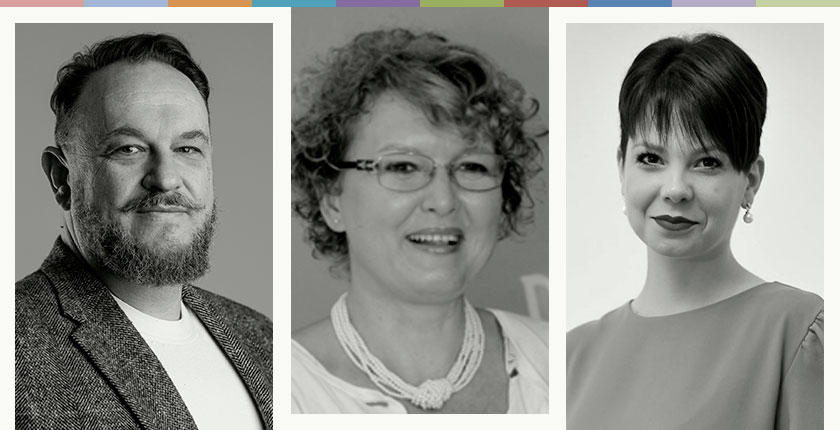
“It is important to stress above all that no waste management system has been established in Serbia,” Jovanka Dakić from JKP Higijena Pančevo said at the beginning of our conversation.
The primary system is made up of special receptacles for separate waste collection which enable the separation of fractions of an appropriate quality for further use. In practice it is impossible to achieve 100% purity of waste collected separately, and secondary separation enables further separation to obtain waste that can be recycled or utilized for the production of electricity and/or heat.
Around 600,000 tons of waste ends up in illegal landfills because rural parts of Serbia aren’t covered with garbage collection and transportation infrastructure
Several factors are missing for such a system in Serbia, our collocutors say. The first one is economic sustainability, which is secured through an adequate price for the utility service and by applying the principle of extended producer responsibility. The second factor is adequate infrastructure and equipment, namely sanitary landfills, recycling centers, waste treatment facilities and trucks.
The third one is the enforcement of regulations, particularly penalties for negligent waste disposal, and the fact that 100% of municipal waste can be landfilled without any restrictions, or a mechanism that would make landfilling more expensive for those who generate waste (companies and the population).
The fourth factor is qualified staff, and the fifth and last one is the political will to integrate all of the above.
Landfilling is the final stage in managing municipal waste in developed countries, but in Serbia it is the first one because it is free
When it comes to infrastructure, Serbia has only 11 sanitary landfills, where only 560,000 tons of waste is deposited per year, compared to 138 unsanitary or municipal landfills, while only sanitary landfills are considered to be part of an orderly system. In addition, about 13% of Serbia’s territory, mostly rural areas, isn’t covered by a waste collection utility service, so the waste ends up in about 3,500 illegal landfills.
We obtained the data from the State of the Environment in the Republic of Serbia Report for 2020, which also says that out of some 2.9 million tons of waste that is generated in Serbia each year, around 600,000 tons isn’t collected and isn’t landfilled at sanitary landfills or garbage dumps.
Gojkan Stojinović, a waste management and circular economy expert, says even the basic elements of operational management, planning and analysis are problematic, so that Serbia still doesn’t have accurate and precise data on the amount of generated waste to work with, but only arbitrary estimates. The issue is exacerbated further by the fact that there are no precise and usable data of appropriate quality on the composition of waste.
If utilities in Serbia paid for landfilling, they would have an economic interest in lowering the quantities they landfill
Primary separation, and the separation of the components of waste in general, is found only in traces, Stojinović stressed.
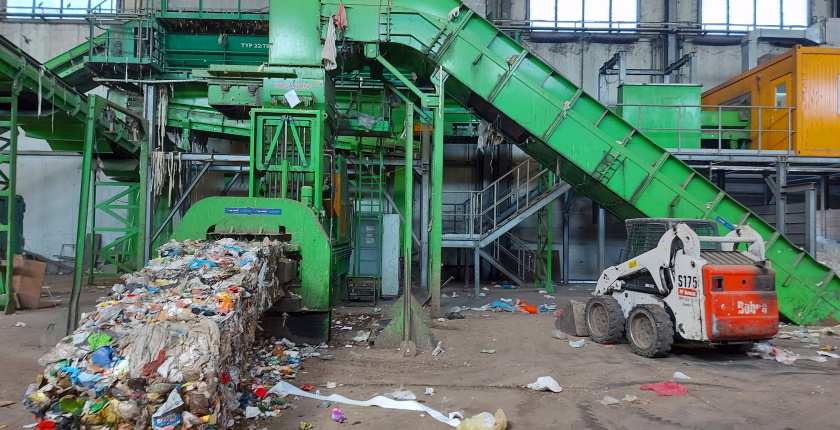
It is the separation of waste that hints at waste management hierarchy, which is essential for a proper waste management system: waste prevention, reuse, followed by separation, recycling, energy recovery and, only at the bottom of the ladder, landfilling. However, landfilling comes first instead of last in Serbia.
Landfilling or unloading waste from a public utility enterprise’s trucks at unsanitary landfills or garbage dumps is free in Serbia. At best, Stojinović says, only minimal funds are earmarked in the budget, and they are used rather poorly and unprofessionally to create an illusion of some kind of waste disposal.
The responsibility for all this lies with those making politically opportunistic decisions without realizing that garbage should be taken care of, that it otherwise costs us all much more, and that the bill is being paid even through the healthcare system, he stressed.
A municipal waste management system must be economically viable, which is not possible with the price of the utility service being a welfare item
If landfilling in Serbia had to be paid for, namely if there was an item on the bill for waste disposal per kilogram, utility firms would have an economic interest in lowering the quantities they landfill, which they could do, for instance, by separating waste at the source in order for it to be reused and recycled, according to our collocutors.
Investments are required to bring order in the sector, and in Serbia they are missing. Utility enterprises can’t secure funds for investments given their unrealistic pricing policies, which keep the costs of utility services at welfare levels, Dakić and Stojinović say.
Utility prices are still mostly based on the “prehistoric” model of billing per unit of surface area, as if square meters and not people generate waste, Stojinović adds.
The economic factor’s significance is evident from the fact that even when there is appropriate infrastructure like, for instance, the regional sanitary landfill in Subotica, its capacities aren’t fully utilized because local authorities aren’t willing to pay for waste disposal and landfilling.
Utility prices are still mostly based on the “prehistoric” model of billing per unit of surface area
On top of all this, Stojinović underscored, the utilities are burdened with politically suitable staff, who, in many cases, are far from competent. Such enterprises are part of the “political spoils” and are, as such, prone to unrealistic headcounts that surpass the capacities of a solid market-based business, he stressed.
When we add to this the inadequate enforcement of the law and bylaws, poor oversight mechanisms, delays in producing key strategic documents, inertia and the lack of interest in addressing the essence instead of the form, we end up with the familiar sight of an enormous number of illegal waste dumps along with waste in rivers, lakes and protected areas and the polluted land, water and air.
Price of garbage collection, disposal must be raised alongside the introduction of landfilling pricing
Given that municipal waste management in Serbia is inefficient, partly because it isn’t even economically viable, solving the financing issue is the priority. Obtaining accurate data on the morphological composition of waste is an unavoidable step in the calculation of the future market price, since it is the way to determine how much of the waste can be reused, recycled or used to produce energy.
The most important fact about the possibilities of energy recovery from waste is that out of the 2.9 million tons of waste that is generated per year, 470,000 tons can’t be used for anything else but the production of energy (plastics make up about 50% of the category). Still, a significant amount of what is recyclable in theory is exceptionally difficult or expensive to separate for recycling, so incineration is the only solution for such waste, too.
Instead of becoming a new product, waste is turned into feedstock for the production of electricity and/or hot water for heating. Having in mind the current energy crisis and the state of the environment, it is irresponsible to negligently squander a precious energy source by disposing of it at landfills, where it pollutes nature and endangers people’s health. Estimates say that if all municipal waste was used to obtain energy, it would enable cutting lignite consumption by 7% or oil consumption by 500,000 tons, which is 20% of its imports.
Around 44% of waste is biodegradable, which means it could be processed into compost or biogas
The most recent analysis of the composition of municipal waste in Pančevo, a city located just northeast of Belgrade, sheds a new light on the matter. The research, which involved waste separation into as many as 40 types, was conducted in February by Green Loop and the Faculty of Geography of the University of Belgrade in cooperation with JKP Higijena Pančevo.
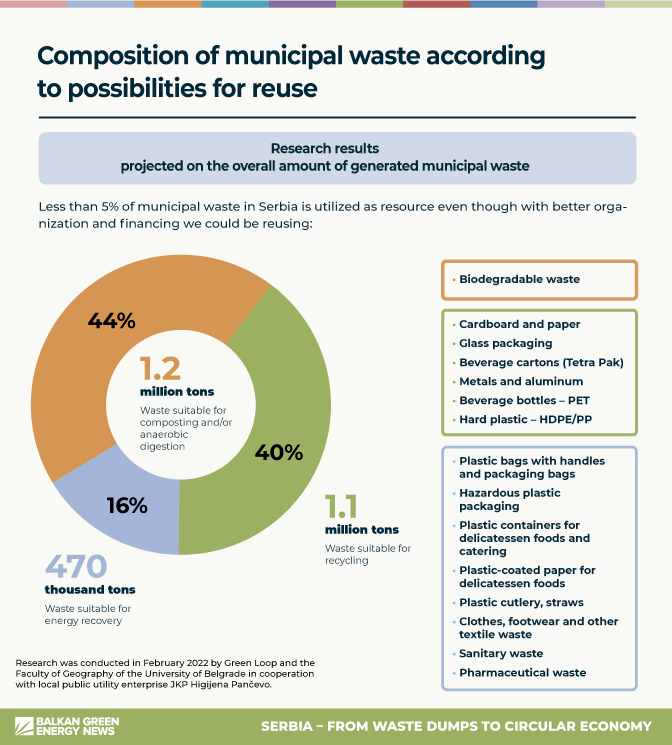
According to available data, 44% of biodegradable waste could be used for composting or anaerobic digestion or biogas production. It is possible to recycle 40% of municipal waste, while 16% is suitable for energy recovery or the production of energy. Finally, a very small amount of waste would end up in a landfill.
Milica Lukić, a researcher from the Faculty of Geography, who took part in the analysis, says the research delves into the core of the problem – the contents of our trash can and the kind of waste we generate.
It is surprising, she said, how much food we throw away, not only leftovers from fruit, vegetables and bread, but also entire food items. This creates an opportunity for composting, Lukić noted, recalling that the practice is still undeveloped in Serbia, which is why the bulk of green waste ends up in landfills. Of note, biowaste is the biggest generator of landfill gas and drain water, the chief pollutants emitted from garbage dumps.
The research in Pančevo showed there are large quantities of packaging waste in municipal solid waste, especially plastic waste – single-use plastics, as well as plastic bags and single-use food containers.
PET bottles, aluminum and other metals, and glass packaging make up most of the waste that is recycled in Serbia, Milica Lukić said, adding it is true that the bulk of the waste in our trash cans currently can’t be recycled in Serbia or used in any other way.
“Due to the inadequate and insufficiently developed waste management system in our country, most of it still ends up in landfills, without any prior processing,” Lukić explains.
The price of the utility service should be increased by 70% within the next three to five years
The composition of waste proves there is potential to do something with it before it is landfilled. But this requires the aforementioned infrastructure, and it costs money. Everything revolves around the price of the utility service that citizens pay.
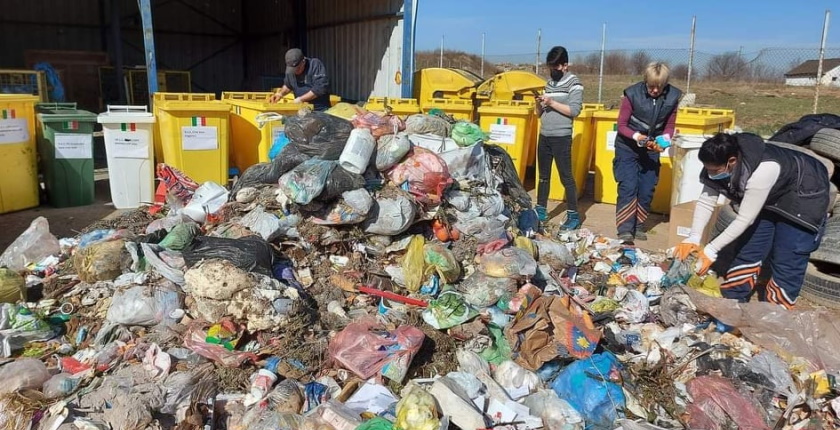
Another analysis, conducted by the KOMDEL business association of utilities and published in October 2021, showed the average price of household garbage collection, based on a sample of 50 utility firms, is 5.4 eurocents per square meter, and is 2.4 times higher for legal entities – at 12.7 eurocents per square meter.
Utility enterprises asked for a price increase of 15% last year, so the new prices would range from 5.7 to 8.9 eurocents per square meter (6.2 eurocents per square meter on average), which would, in KOMDEL’s view, also be the first necessary step toward covering the economic cost.
With the planned price increase, “the average expense for one family for the services of municipal waste collection, transportation and deposition” would be EUR 3.39 to EUR 5.35 or between 0.67% and 0.93% of the average net salary in Serbia.
According to the methodology of the Standing Conference of Towns and Municipalities (SKGO), prices are considered to be affordable when the average bill is no higher than 1.5% of the average net salary earned within a given municipal unit.
The prices in an overwhelming majority of cities and municipalities in Serbia are still far from that level, which leads to the conclusion that, given the current standard of living, an overwhelming majority of citizens would be able to pay substantially bigger monthly bills, KOMDEL pointed out.
KOMDEL: It won’t be possible to reach high environmental protection standards with the current price of the utility service
KOMDEL also produced a projection of the prices of basic utility services in the Western Balkan region based on an estimate of the population’s real purchasing power. The projection shows the prices should be increased by 70% within three to five years.
With the current price of the waste management utility service, it won’t be possible to reach high environmental protection standards or make progress on chapter 27 of European Union membership negotiations, KOMDEL warned.

Unfortunately, Gojkan Stojinović says, citizens have to put up with an arbitrary model of utility service pricing, based mostly on billing per square meter of living space, which is the worst and least transparent model.
In his view, billing per household member is also bad, as a three-member family with a high living standard, and thus stronger purchasing power, can generate more waste than a less wealthy one with five members.
In any case, it is necessary to implement the pay-as-much-as-you-throw-away model, a clear quantitative pricing method that would be a stimulative measure and a deterrent at the same time, Stojinović suggests.
The pay-as-much-as-you-throw-away system would be a stimulative measure and a deterrent at the same time
Simply put, the model would incentivize those who sort their waste, separate packaging for recycling purposes, treat their biowaste on their own or in joint composting facilities and take specific waste streams to recycling yards, reducing the final amount of waste for landfilling, but also their own monthly waste bill.
A pilot project being implemented in Pančevo in cooperation with the United Nations Development Programme (UNDP) could show how the new model could look in practice, Jovanka Dakić explains.
Namely, 300 single-family homes got three waste receptacles each: a bin for wet waste, which is landfilled, a bin for dry waste to put packaging waste in it for recycling, and a receptacle or home composter for biowaste.
The aim of the Pančevo pilot project is to determine the annual amount of each component of waste generated by one citizen in kilograms as well as to record the contribution of home composting to the reduction of greenhouse gas emissions, as composting lowers the quantity of biowaste in the content of the bin for wet waste, which ends up in landfills.
Municipal waste management system must be economically sustainable
Asked how to change the current situation, Jovanka Dakić and Gojkan Stojinović said we can’t copy-paste good models for the municipal waste management system.
The first step should be to improve the quality of reporting on municipal waste and sanction local authorities that don’t submit data to the Serbian Environmental Protection Agency (SEPA), which is their obligation under the Law on Public Utilities.
Gojkan Stojinović believes that progress in the entire area depends critically on well-balanced cooperation between experienced experts that have been dealing with waste management operations for decades and young experts educated in environmental protection programs.
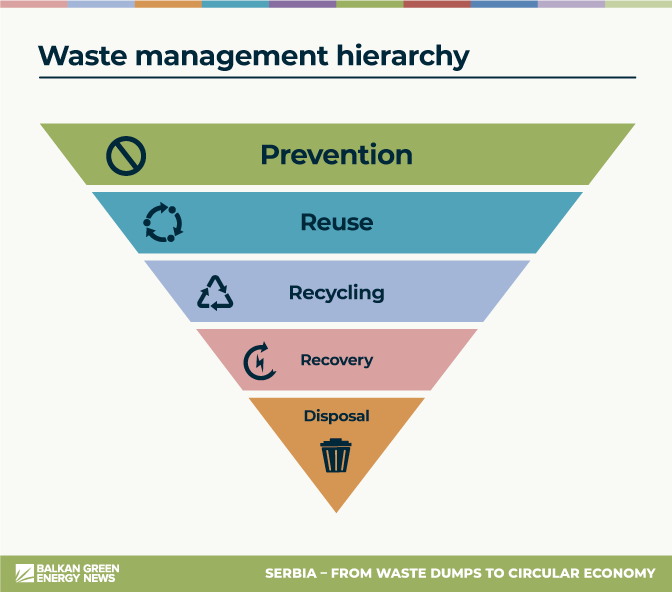
Jovanka Dakić says there is no system if the economics aren’t clear. Above all, it is necessary to define every expense: where it originates, how high it is, and who needs to pay for it.
“Until all waste fractions are registered and measured and real data put in a spreadsheet, and until we know the cost of reusing or recycling or another process, or landfilling the waste – we can’t build a system in which utilities will have realistic and optimal working conditions,” she asserted.
When waste management economics are no longer a welfare factor, and prices of utility services are adequate, and when landfilling is more expensive than recycling and treating waste to obtain energy, when utilities’ efficiency is higher – only then can the good, tested models for a municipal waste management system be applied.
The experts agree that efficient financial schemes must be secured for establishing and maintaining an efficient municipal waste management system, for instance a landfilling surcharge, a packaging surcharge, a tax on unrecycled plastics, but also subsidies for utility enterprises.
Extended producer responsibility
There is no economic sustainability for a waste management system, our collocutors say, without an efficient application of the extended producer responsibility principle. It implies that those who produce and market a product or packaging are responsible for its entire life cycle. The responsibility begins with eco-design and extends to facilitating the collection of waste packaging or products and funding the entire cost of their deposition so that they don’t end up in the environment.
GOOD TO KNOW
MUNICIPAL WASTE – waste from households (household waste) and commercial waste.
POLLUTER PAYS PRINCIPLE – a concept of responsibility where the one that generates the waste (citizen, firm or institution) is responsible for covering the cost of its removal or the damage resulting from pollution.
PRICING BY SQUARE METER – a utility service charging system in which the price is based on the surface area used by the one who is liable to pay, instead of the real amount of generated waste.
PRICING ACCORDING TO THE NUMBER OF PEOPLE IN A HOUSEHOLD – a charging system in which the cost of municipal waste collection depends on the number of people living in a household, rather than the real amount of waste they generate.
PAY-AS-MUCH-AS-YOU-THROW-AWAY PRINCIPLE – a system of charging according to the real amount of waste that the person liable to pay hands over to the utility enterprise.
WASTE SEPARATION, SELECTION OR SORTING – separation of different kinds of waste so that they can be recycled or reused.
PRIMARY SEPARATION OF WASTE – separation of waste at the point of origin (household, company, recycling points in the street…) and its placement in special receptacles, from which the separated waste is collected for further processing (secondary separation, pressing…).
SECONDARY SEPARATION OF WASTE – separation of waste at automated lines, operated by waste management enterprises, into fractions that can be reused either for recycling or for energy production and/or fractions that have to be landfilled.
RECYCLING POINTS AND CENTERS (YARDS) – smaller and bigger locations where citizens can conduct primary separation or, more precisely, dispose of sorted waste.
RECYCLING – processing waste to obtain a material that can be utilized for making new products. PET and Tetra Pak packaging, glass, metals, paper, cardboard, textile, and electronic waste can all be recycled.
WASTE-TO-ENERGY – burning particular types of waste in special facilities to generate electricity and heat.
COMPOST – natural fertilizer made from biowaste (biodegradable waste), which consists of leftovers from food or plants.


















Such an interesting article. Thank you to the researchers and experts for analysing the current situation in Serbia. A question for the team, hypothetically, if we wanted to implement a waste management system (including proper pay for staff, rubbish trucks, complimentary bins etc), what would the cost be to implement such a process in a smaller town? (As a starting point, if we were to obtain funding for one town at a time). There may be a number of caveats around my question but definitely a hypothetical. Thank you.